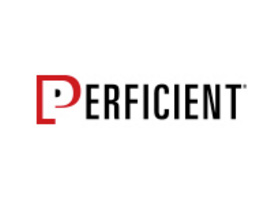Visit Perficient in Denver next week at COLLABORATE13, April 7-11. You’ll be joining us and fellow E-Business Suite, Agile, Hyperion, Siebel, Primavera and other Oracle applications users for a fast-paced week of interactive education sessions, engaging networking opportunities, groundbreaking keynotes and of course one of the main attractions – the Exhibitor Showcase. Perficient team of experts will […]
Posts Tagged ‘agile’
Frequent Flyers and Savvy Patients?
I was standing in line at the airport a few days ago and it occurred to me after the gate agent referred the standby passengers to their smartphones to see their seat assignments how much technology has changed the airline boarding process. I recalled the days of being frantically taken down the jet way while […]
Agile: Every Journey Starts with a Single Step
Agile development methodologies have a number of important tenets, but one of them is a short time to market. An agile team decides the first core functionality, builds it and gets feedback on it. It’s like picking out the corner pieces of a puzzle to start. Then each iteration adds a few pieces to the […]
Van Halen, Brown M&Ms and Quality Control
I saw an interesting video today about attention to detail and quality control. In the video, David Lee Roth describes a tactic that the band Van Halen used to test for attention to detail and be warned of possible red flags in the preparation of large shows. In the video Roth explains that they used […]
How Oracle’s Acquisition Strategy Impacts the Partner Community
I recently attended an Oracle partner meeting in Denver. Upon entering I noticed how few of the partner firms I recognized. Twelve years of attending these kinds of meetings and all of sudden, not only did I not see those who usually attend, I didn’t recognize the ones who were there. Was I the only […]
2012 Agile Tour Hangzhou Stop
Perficient GDC held Agile Tour Hangzhou stop event successfully again. As most of you know, agile tour is a global activity. It is held around the world in more than 40 cities. Perficient GDC conducts this event in Hangzhou since 2009 as a major organizer and sponsor. Why do we dedicate in this community? From […]
Continuous Delivery in a Mobile World
If you took a poll of the mobile development teams out there, odds are that most of the teams are using some form of Agile development methodology practice. One of the reasons is that the concept of Agile sprints fit very well into the update model that the mobile app market has defined. The sprints, […]
Using story points or hours for estimation?
Everybody knows the estimation for tasks, but many folks are confused on the metric of the estimation.
CMMI vs Agile
Recently, I read a blog which is talking about the differences between CMMI and Agile. I want to share with you. In that blog, it said there are 7 distinct differences: 1. Focus Quoting from the Blog CMMI focuses on the development of organization. The purpose of CMMI is getting benefits from the organizational optimization. […]
Motivation in an Agile Team
Motivation is an important personal skill to inspire individuals to reach a goal or diminish some kind of feelings like pain. Moreover, it may be beneficial to have a good motivation skill throughout your life. The interesting image (left) shows an impossible thing–an ant is holding up a length of wood which is several times it’s […]
Thinking Differently from the Beginning
Do you always experience similar results with two different projects that are very similar? Or do you ever have two similar projects that have significantly different outcomes? I’ve had this experiences. One project had the most typical elements of a failure project: go-live was delayed; we had an over-run budget; there were endless bugs and exhausted […]
PowerDesigner Tips – Mappings in the Model
We’re constantly looking for ways to streamline the BI development process. Data mapping (source to target) can be a complex and cumbersome process due to: Ongoing model changes – the target moves! Poor (or “loose”) communication between those mapping and the development team. Lack of consistency in collecting and documenting mappings (Excel, I’m looking at […]
